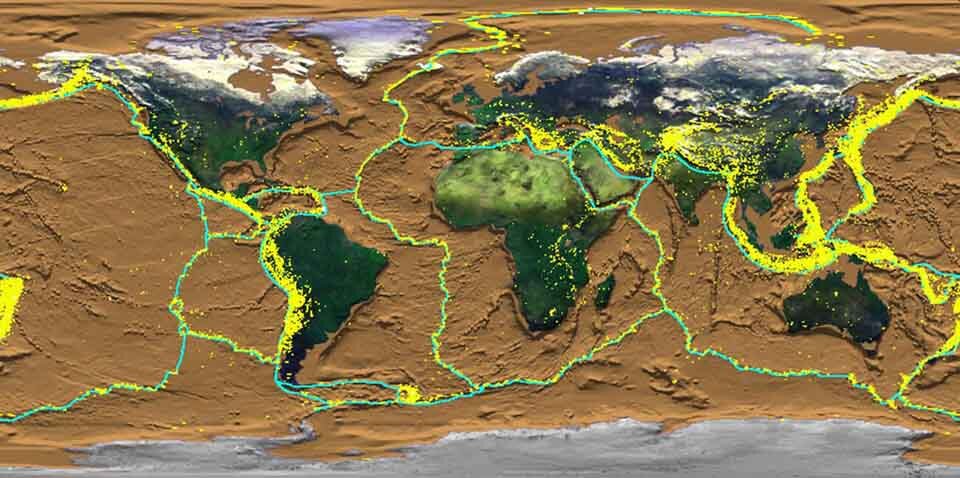Understanding the Science Behind Earthquakes

By now, there is no doubt that you have heard about the earthquakes that have devastated Turkey and Syria in the last month.
The earthquakes have caused monumental damage across the affected region, killing over 45,000 people and making millions of people internal refugees. This article will attempt to explain the science behind earthquakes and why the earthquakes in Turkey and Syria have been so devastating.
Tectonic Plates
You may remember from your high school geography lessons that the world is made up of tectonic plates that sit below the ground in the earth’s lithosphere.
There are two types of plates. There are continental plates, which lie underneath the earth’s continents, and oceanic plates, which lie beneath the oceans.
There are 17 of these plates. Some are known as major plates, such as the Pacific Plate, which is over 100 million Sq Km in size. There are also minor plates, the smallest being the New Hebrides Plate, which is only estimated to be 1 million Sq Km in size. However, all the plates are being moved very slowly by the molten rock and lava beneath them. This process is known as plate tectonics.
Plate Boundaries
As I mentioned, all the tectonic plates are moving. However, depending on the plates’ direction of movement determines what happens at the boundaries where the two plates meet.
If the plates are divergent, then they are moving away from each other, which can result in the formation of valleys and rivers on land and ocean ridges underwater. The splitting of the land can also cause earthquakes.
There are also convergent plates. Convergent plates are two plates that move towards one another. This movement creates enormous pressure, usually between oceanic and continental plates. When this pressure builds, it can cause subduction, where the oceanic plate slips beneath the continental plate because it is heavier. Subduction tends to cause earthquakes and tsunamis but also causes the formation of mountain ranges and volcanoes.
Finally, if plates are transformative, they move side by side like the way two cars on opposite sides of a road would drive past one another. The difference is that the plates rub against each other in the process. While these plates do not create or destroy the land, they cause powerful earthquakes due to the release of pressure that rocks release as they get pulled and deformed as the plates move. The lateral movement is known as a strike-slip fault and caused the earthquakes in Turkey and Syria, as the Anatolian and Arabian plates meet at the East Anatolian Fault. The most famous transformative fault is the San Andreas fault in California.
The Significance of Frictional Healing
While it sounds complicated, frictional healing is a simple process to get your head around and may explain why the earthquakes have been so frequent and violent in Turkey and Syria over the last month.
Simply, frictional healing is where the friction between two transformative plates slows down how fast they move. This causes the stress and pressure to be stored in the rocks for more extended periods than they would have been if they had been able to move freely. So, when the rocks finally split, they release a high volume of energy, resulting in an earthquake.
Looking into the Crystal Ball
Natural disasters like the earthquakes recently experienced in Turkey and Syria are significant threats to nations that live on or near plate boundaries. It is, therefore, the work of scientists across the globe to try and prepare states for when they strike.
Such work has recently been undertaken by scientists (1) researching the Hikurangi tectonic plate boundary, located to the east of New Zealand. They have discovered that weaker materials that release energy more frequently at plate boundaries (where frictional healing can’t occur and pressure and stress are not stored for long periods) result in smaller, more frequent seismic events.
This new research may help future scientists predict the velocity of future earthquakes. This is vital knowledge, as it means that architects and state governments can ensure that buildings can withstand the pressure and stress of earthquakes. The research comes at a time when a large part of the death toll in Turkey should have seemingly been avoided. The Turkish government provided “construction amnesties”, allowing firms to build without adhering to legal regulations. These amnesties have resulted in safety regulations not being followed during the construction of a large amount of Turkey’s infrastructure, leading to the collapse of so many apartment buildings in the region.
References
(1) https://www.science.org/doi/10.1126/science.adf4930

Comments are closed.